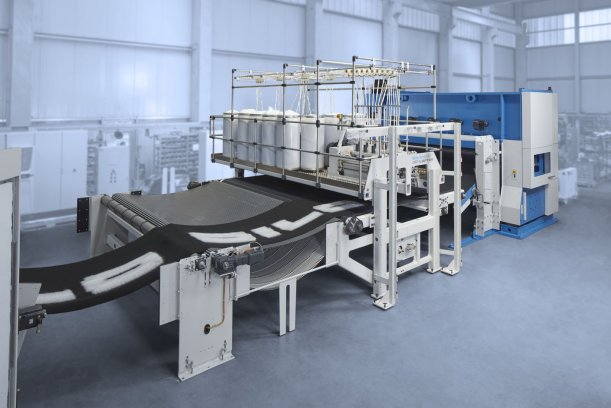
Changing the world with textile innovations
Focus on savings via needling on light weight fibe-fibre nonwovens.

16th May 2022
Innovation in Textiles
|
Eberbach, Germany
For DiloGroup, the forthcoming Techtextil in Frankfurt will provide an ideal oppportunity for the company to discuss new developments aimed at improving production technologies, with a focus on needlefelts.
It is becoming increasingly evident that the textile industry is coming more to the attention of regulatory authorities and all industrial sectors are being requested to achieve savings in raw materials and energy, the company says. Production machinery will play an important role, with new solutions for fibre pulp recycling and the reduction of energy, water and ancillaries.
Working with a number of partners, Dilo is developing new concepts including intense needling, as an alternative to hydroentanglement for light nonwovens made of fine fibres for the medical and hygiene sector within a weight range of 30-100gsm.
Needling itself is a mechanical production method with high energy efficiency and can reduce environmentally relevant production costs by between a fifth and a third per annum
Despite these advantages, hydroentanglement is at the moment the most important production method for low area weights and the highest production capacity and is also offered by the DiloGroup as general contractor in cooperation with partner companies.
Fibre pulp recycling is also being explored. Fibrous material in nonwovens, and particularly used clothing, can be successfully recycled if staple length can be conserved in the tearing process. In the classical tearing process, staple lengths are dramatically reduced and therefore these fibres can only be used as base material for inferior uses in thermal or acoustic insulation or in protective textiles, transportation or protective covers etc.
When recycling textile waste in the context of the collection of used clothes, so called “filament-saving tearing” using special tearing machines and methods can be used to produce fibres with longer staple lengths which can be fed to a nonwoven installation. As a result, product characteristics can be better specified and controlled.
Dilo’s 3D-Lofter is meanwhile especially suited for automotive parts with differently distributed masses, but there may also be potential for increasing its uses in the sectors of apparel and shoe production and in the field of card feeding. In addition, the IsoFeed method offers great potential for a more homogeneous card feeding, reducing the variation in cross-machine fibre mass distribution and thus fibre consumption while conserving end product quality.
DiloGroup will be happy to discuss these developments in needling technology as well Industry 4.0 applications for further digitalisation during the Techtextil exhibition.

Business intelligence for the fibre, textiles and apparel industries: technologies, innovations, markets, investments, trade policy, sourcing, strategy...
Find out more